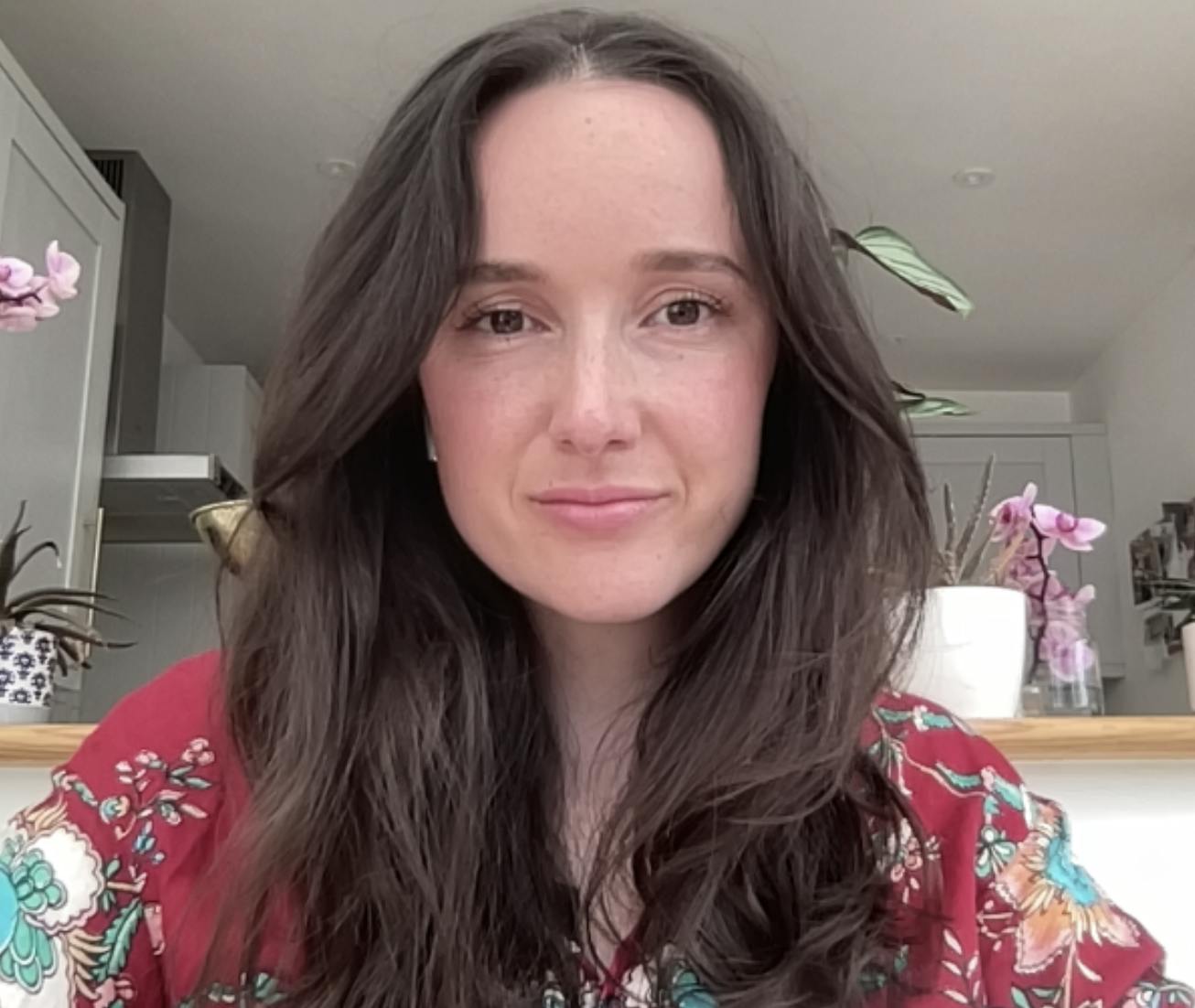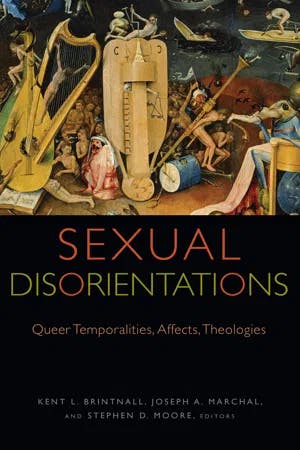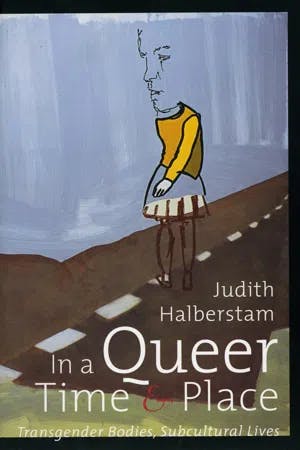What is Queer Temporality?
PhD, Media Arts and English Literature (Royal Holloway, University of London)
Date Published: 28.11.2023,
Last Updated: 09.01.2024
Share this article
Defining queer temporality
Over the past two decades, there has been a “turn toward time” within queer theory (Dinshaw et el., “Theorizing Queer Temporalities,” 2007). The queering of time raises many timely and also timeless questions: about ways of living; power and economics; how the past, present and future engage with one another; the naturalized process in which time collapses into history; and what it might be to live queer lives against, outside, or beyond the clock.
In 2005, Jack Halberstam put forward the “ambitious claim that there is such thing as a ‘queer time’ and a ‘queer space’” (In a Queer Time and Place). If temporality is considered as the social construction of time (for example, the idea of an eight-hour working day, or the idea of a ticking, reproductive ‘body clock’, and the affective experience of time as linear), then a queer temporality challenges these logics. Halberstam writes that queer uses of time “develop, at least in part, in opposition to the institutions of family, heterosexuality, and reproduction,” and that queer subcultures “produce alternative temporalities by allowing their participants to believe that their futures can be imagined according to logics that lie outside of those paradigmatic markers of life experience—namely, birth, marriage, reproduction, and death” (2005). As Halberstam and many other queer theorists have explored, by tracing the ways in which sexuality and temporality are tethered together, alternate conceptions of the hegemonic constructions of time and space can come into view.
In their introduction to Sexual Disorientations, Stephen D. Moore, Kent L. Brintall and Joseph A. Marchal put forward their definition of queer temporality:
Through the disorientation that goes hand in hand with queer temporalities, new queer horizons and histories can unfold. These can disturb linear notions of time, reconfiguring the past, present and future, as this guide will outline. Alongside their economic, political, and affective implications, queer temporalities have also allowed for new methodologies and modes within literary studies and historiography for engaging with queer texts.
Dismantling linear time
For many queer scholars, queer temporality can be seen to have emerged at the end of the twentieth century in relation to the AIDS crisis. As Halberstam writes, the epidemic diminished the “horizons of possibility” for queer communities, which created:
Between 1987 and 1988, AIDS killed 324,029 men and women in the USA. This profoundly impacted queer communities, altering the personal, social, and psychological contours of life, both during the epidemic and afterwards. It also shaped experiences of time: as Halberstam continues, “the conventional emphasis on longevity and futurity” was rethought:
And yet queer time, even as it emerges from the AIDS crisis, is not only about compression and annihilation; it is also about the potentiality of a life unscripted by conventions of family, inheritance, and child rearing. (2005)
Queer temporalities thus stand in opposition to normative, sequential, and linear timelines.
Queer lives often do not cohere with traditional markers of life experience, of “adolescence–early adulthood–marriage–reproduction–child rearing–retirement–death” (Dinshaw et el., 2007). Elizabeth Freeman observes that this sense of asynchrony
can be viewed as a queer phenomenon–something felt on, with, or as a body, something experienced as a mode of erotic difference or even as a means to express or enact ways of being and connecting that have not yet arrived or never will. (“Introduction”, GLQ, 2007)
Thus, queer temporalities form radical ways of being that challenge — or even dismantle — linear conceptions of time. The idea of time or history as linear operates through a logic where, as Lee Edelman writes, “meaning succeeds in revealing itself–as itself–through time,” which he critiques as “the poor man’s teleology” (No Future, 2004). This teleological sense of linear time has been questioned by queer theorists in many different ways.
Queer temporalities can refuse straightforward ideas of causality, as Carla Freccero notes, arguing for “an eccentric relation between events and their effects, and its challenges the empiricism of what qualifies as an event” (“The Queer Time of Lesbian Literature: History and Temporality”, The Cambridge Companion to Lesbian Literature, 2015). By questioning what constitutes a meaningful event (such as a wedding day or a birthday), new relations to the experience of time can begin to emerge.
Queer time can also step out of the tempos of everyday life, and critique heteronormative temporalities governed by marriage, reproduction and child-rearing. These linear temporalities are critiqued as “straight time” (Boellstorff, “When Marriage Fails,” 2007), “reproductive futurism” (Edelman, No Future, 2004), and “chrononormativity” (Freeman, Time Binds, 2010), where queer time undermines and undoes these societally enforced scripts. Instead of a linear sense of time, as Eve Kosofsky Sedgwick states, “queer is a continuing moment” (Tendencies, 1993).
It is through this continuing queer moment that alternative relations to and between the past, present, and future can be realized, outside of conventional imperatives of time.
Rethinking the past and the present
For Carolyn Dinshaw, the turn towards time within queer theory is motivated by a “queer desire for history [...] a desire for a different kind of past, for a history that is not straight” (Dinshaw et al., 2007). Queer temporalities offer alternative engagements with different types of history, ones that do not adhere to foundational ideas of univocal succession and progression. These queer histories are ones that have often been occluded, silenced and might appear in unconventional forms.
As Melanie Micir explores in The Passion Projects, “the queer archival project is structured by absence — and the question of how to read, preserve, and honor the violence of that absence” (2019). The past might be retrieved or accessed in queer embodied and affective ways in — as Ann Cvetkovich explores — “an archive of feelings” (An Archive of Feelings, 2003), rather than an official, well-preserved historical record. These might take the form of unfinished or unpublished autobiographical acts and correspondence, as seen in The Passion Projects. Freeman proposes another alternative “counter-genealogical practice,” of “temporal drag” where drag performance and ball culture can be a “way of becoming and being historical,” of
It is through this reconfiguration of linear history — what some refer to as queer historicism or “unhistoricism” (Goldberg and Menon, “Queering History,” 2005) — that the queer past is retrieved and reanimated.
The “continuing” queer moment can reimagine the present, as well as the past (Sedgwick, 1993). Queer theory recasts the present as a fleeting flicker, from a link in a sequential chain and into “a kind of expanded now in which past, present, and future coincide” (Dinshaw et al, 2007). Dinshaw’s Getting Medieval puts forward the theory of a queer touch that occurs across time, where the present is affected by other temporal moments through desire, where contemporary scholars search out “new relations, new identifications, [and] new communities with past figures” (1999).
Queer theory’s engagement with the past is what Freccero describes as a haunting, where “queer time is haunted by the persistence of affect and ethical imperatives in and across time,” which she calls “[l]iving with ghosts” (Queer/Early/Modern, 2006). As a mode of historicity, this can be thought of as a “hauntology,” which, as Frecerro continues, is “the way the past or the future presses upon us with a kind of insistence or demand, a demand to which we must somehow respond” (2006).
Frecerro concludes Queer/Early/Modern with an image often recalled in discussions of queer temporalities: Walter Benjamin’s angel of history. Benjamin’s image of the angel of history is based upon Paul Klee’s painting “Angelus Novus” (1920) Of this painting, Benjamin writes:
it shows an angel looking as though he is about to move away from something he is fixedly contemplating. His eyes are staring, his mouth is open, his wings are spread. This is how one pictures the angel of history. His face is turned toward the past. Where we perceive a chain of events, he sees one single catastrophe which keeps piling wreckage upon wreckage and hurls it in front of his feet. The angel would like to stay, awaken the dead, and make whole what has been smashed. But a storm is blowing from Paradise; it has got caught in his wings with such violence that the angel can no longer close them. The storm irresistibly propels him into the future to which his back is turned, while the pile of debris before him grows skyward. This storm is what we call progress. (Illuminations, 2015)
The past, present and future are thus experienced as spectral swirlings, where queer time can allow the present moment to be touched and inhabited by multiple temporalities. Calling on this image, Frecerro describes a queer hauntological feeling:
Debates about futurity
What of the future? Edelman’s polemic No Future presents an anti-relational theory that dispels the future entirely. The future that Edelman critiques is the future of compulsive heteronormativity and “reproductive futurity,” which is presented through the image of the Child as the “perpetual horizon of every acknowledged politics” (2004). The symbol of the Child, Edelman explores, is harnessed as an oppressive tool for those who do not participate in reproductive futurity, which positions them as a threat to the Child, and thus the future. Therefore, Edelman implores for the rejection of the future and an embrace of queer negativity:
we have seen the future and it's every bit as lethal as the past; and thus what is queerest about us, queerest within us, and queerest despite us, is our willingness to insist intransitively: to insist that the future stops here. (“The Future Is Kid Stuff”, 1998)
Contrasting Edelman’s stark rejection of futurism, José Esteban Muñoz sees queerness as “visible only on the horizon” of the future (Cruising Utopia, 2019). Muñoz formulates a queer optimism, positing queerness in a future moment defined by potentiality and possibility, where “we are not yet queer” (2009). This hopeful futurity is not the same future as the one presented by Edelman. Both are wary of the trappings of “straight time” and the strictures of reproductive futurism. For Edelman, there is no way to separate this ossification from futurity whereas Muñoz aligns “straight time” with the “here and now” of the present moment, and strives towards a more radical, conceptual future moment (2009).
What can queer temporalities do?
In the 2007 GLQ roundtable discussion on queer temporalities, Christopher Nealon proposes that,
In writing about ‘time’ and ‘history,’ we’re definitely (though often implicitly) writing about the possible forms and destinies of queer community. But I also think, when we talk about time, we’re talking about economies. (Dinshaw et el., 2007)
In formulating potential forms, destinies and economies, work on queer time is profoundly politically motivated. Heather Love’s Feeling Backward (2009) directs our political gaze backwards to the darkness of a silenced, despairing and painful past, to shape the transformative politics of today. Much work on queer time seeks to critique the capitalist underpinnings of society; where Freeman states that chornonormativity is “a mode of implantation, a technique by which institutional forces come to seem like somatic facts” (2010). Freeman goes on to explain that schedules, time zones, calendars and wristwatches all contribute to what Evitar Zerubavel sees as the “hidden rhythms” of temporal life (Hidden Rhythms, 1981). These appear natural to those who benefit from them, contributing to the “sequence of socioeconomically ‘productive’ moments” (Freeman, 2010). By questioning ideas of productivity and value, other ways of living can be realized.
Kara Keeling explores other modes of being within the speculative narratives in cinema, music and literature to imagine spaces and futures for queer and Black freedom, engaging with philosophy, queer theory and Afrofuturism to conceptualize a “gateway” to these radical possibilities (Queer Times, Black Futures (2019). Elsewhere in literary studies, Madhavi Menon’s queering of Shakespeare’s works demands a reconfiguration of the ways that scholarship engages with the past entirely (Shakesqueer, 2011). Instead of a heterotemporal historiography, which Menon critiques as contemporary scholarship’s insistence on ideas of difference, she proposes a “homohistory,” which allows for the “unhistorical” exploration of the literature of the Renaissance (2011).
Exploring the early twentieth century, Kate Haffey explores modernist literary experiments as precursors for contemporary queer theory. Haffey reads moments like Clarissa’s memory of her kiss with Sally in Virginia Woolf’s Mrs Dalloway (1925 [2013]), which is described as the “most exquisite moment of her whole life” as disrupting linear temporality (Literary Modernism, Queer Temporality, 2019). Contemporary writers like John Keene are also utilizing queer time. In a review of Keene’s novel Counternarratives (2015), which examines the histories of colonialism and slavery, Julian Lucas described queerness as
not a wrinkle in generational time, but a subject – and lens – in its own right. Glimpsed from the peripheries of gender and sexuality, history confesses concealed depths and old stories reveal unsuspected trajectories. (“Epic Stories That Expand the Universal Family Plot,” 2017)
Queer temporalities can reveal a number of radical and unsuspected engagements with the past, present and future, that perturb normative ideologies and persist. As Sedgwick writes in Tendencies, “something about queer is inextinguishable” (1993).
Further queer temporality reading on Perlego
Avery, S. and Graham, K. (2016) Sex, Time and Place. Bloomsbury Publishing. Available at: https://www.perlego.com/book/816637/sex-time-and-place-queer-histories-of-london-c1850-to-the-present-pdf
Bridges, D. et al. (2023) Gender, Feminist and Queer Studies. Taylor and Francis. Available at: https://www.perlego.com/book/4144813/gender-feminist-and-queer-studies-power-privilege-and-inequality-in-a-time-of-neoliberal-conservatism-pdf
Carr, J. (2013) Queer Times. Taylor and Francis. Available at: https://www.perlego.com/book/1679286/queer-times-christopher-isherwoods-modernity-pdf
Davis, B. and Funke, J. (2011) Sex, Gender and Time in Fiction and Culture. Palgrave Macmillan. Available at: https://www.perlego.com/book/3502217/sex-gender-and-time-in-fiction-and-culture-pdf
Dinshaw, C. (2012) How Soon Is Now? Duke University Press. Available at: https://www.perlego.com/book/1458235/how-soon-is-now-medieval-texts-amateur-readers-and-the-queerness-of-time-pdf
Freeman, E. (2019) Beside You in Time. Duke University Press. Available at: https://www.perlego.com/book/1465717/beside-you-in-time-sense-methods-and-queer-sociabilities-in-the-american-nineteenth-century-pdf
McCallum, E. and Tuhkanen, M. (2011) Queer Times, Queer Becomings. State University of New York Press. Available at: https://www.perlego.com/book/2672700/queer-times-queer-becomings-pdf
Monaghan, W. (2016) Queer Girls, Temporality and Screen Media. Palgrave Macmillan UK. Available at: https://www.perlego.com/book/3489206/queer-girls-temporality-and-screen-media-not-just-a-phase-pdf
Stockton, K. B. (2009) The Queer Child, or Growing Sideways in the Twentieth Century. Duke University Press. Available at: https://www.perlego.com/book/1467515/the-queer-child-or-growing-sideways-in-the-twentieth-century-pdf
External resources
Freeman, E. (2019) “The Queer Temporality of Queer Temporalities,” GLQ, 25.1. Available at: https://muse.jhu.edu/pub/4/article/712683
Halberstam, J. (2008), “The Anti-Social Turn in Queer Studies,” Graduate Journal of Social Science, 5.2. Available at: http://gjss.org/content/anti-social-turn-queer-studies
Matz, J. (2015) “‘No Future” vs. “It Gets Better’: Queer Prospects for Narrative Temporality,” Narrative Theory Unbound, ed. by d Warhol, R. and Lanser, S. S. The Ohio State University Press. Available at: https://muse.jhu.edu/pub/30/oa_edited_volume/chapter/1518429
Pryor, J. (2017) Time Slips: Queer Temporalities, Contemporary Performance, and the Hole of History, Northwestern University Press. Available at: https://nupress.northwestern.edu/9780810135307/time-slips/
“‘Queer Time’ with Elizabeth Freeman”, Queer Lit Podcast. Available at: https://www.spreaker.com/user/14328383/queer-lit-beth-freeman
Roof, J. (1996) Come As You Are. Columbia University Press. Available at: https://cup.columbia.edu/book/come-as-you-are/9780231104364
Bibliography
Benjamin, W. (2015) Illuminations. Penguin.
Boellstorff, T. (2007) “When Marriage Falls Queer Coincidences in Straight Time,” GLQ, 13.2/3.
Brintnall, K., Marchal, J. and Moore, S. (2017) Sexual Disorientations: Queer Temporalities, Affects, Theologies. Fordham University Press. Available at: https://www.perlego.com/book/535531/sexual-disorientations-queer-temporalities-affects-theologies-pdf
Cvetkovich, A. (2003) An Archive of Feelings: Trauma, Sexuality, and Lesbian Public Cultures. Duke University Press. Available at: https://www.perlego.com/book/1467283/an-archive-of-feelings-trauma-sexuality-and-lesbian-public-cultures-pdf
Dinshaw, C. (1999) Getting Medieval: Sexualities and Communities, Pre- and Postmodern. Duke University Press. Available at: https://www.perlego.com/book/1467366/getting-medieval-sexualities-and-communities-pre-and-postmodern-pdf
Dinshaw, C., et al(2007) “Theorizing Queer Temporalities: A Roundtable Discussion,” GLQ, 13.2/3.
Edelman, L. (1998) “The Future Is Kid Stuff,” Narrative, 6.1.
Edelman, L. (2004) No Future: Queer Theory and the Death Drive. Duke University Press. Available at: https://www.perlego.com/book/1466119/no-future-queer-theory-and-the-death-drive-pdf
Freccero, C. (2006) Queer/Early/Modern. Duke University Press. Available at: https://www.perlego.com/book/1467498/queerearlymodern-pdf
Freccero, C. (2015) “The Queer Time of Lesbian Literature: History and Temporality”, in Medd, J. (ed.) The Cambridge Companion to Lesbian Literature. Cambridge University Press.
Freeman, E. (2007) “Introduction,” GLQ, 13.2/3.
Freeman, E. (2010) Time Binds: Queer Temporalities, Queer Histories. Duke University Press. Available at: https://www.perlego.com/book/1467006/time-binds-queer-temporalities-queer-histories-pdf
Goldberg, J., and Menon, M. (2005) “Queering History,” PMLA, 20.5.
Haffey, K. (2019) Literary Modernism, Queer Temporality: Eddies in Time. Springer International Publishing. Available at: https://www.perlego.com/book/3493017/literary-modernism-queer-temporality-eddies-in-time-pdf
Halberstam, J. (2005) In a Queer Time and Place: Transgender Bodies, Subcultural Lives. NYU Press. Available at: https://www.perlego.com/book/720302/in-a-queer-time-and-place-transgender-bodies-subcultural-lives-pdf
Keeling, K. (2019) Queer Times, Black Futures. New York University Press. Available at: https://www.perlego.com/book/921319/queer-times-black-futures-pdf
Keene, J. (2015) Counternarratives. New Directions.
Klee, P. (1920) Angelus Novelus. Oil and watercolor on paper and card. Centre Pompidou.
Love, H. (2009) Feeling Backward: Loss and the Politics of Queer History. Harvard University Press. Available at: https://www.perlego.com/book/1147888/feeling-backward-loss-and-the-politics-of-queer-history-pdf
Lucas, J. (2017) “Epic Stories That Expand the Universal Family Plot,” New York Times.
Menon, M. (2011) Shakesqueer: A Queer Companion to the Complete Works of Shakespeare. Duke University Press. Available at: https://www.perlego.com/book/1465553/shakesqueer-a-queer-companion-to-the-complete-works-of-shakespeare-pdf
Micir, M. (2019) The Passion Projects: Modernist Women, Intimate Archives, Unfinished Lives. Princeton University Press. Available at: https://www.perlego.com/book/1110452/the-passion-projects-modernist-women-intimate-archives-unfinished-lives-pdf
Muñoz, J. E. et al. (2019) Cruising Utopia: The Then and There of Queer Futurity. 2nd edn. New York University Press. Available at: https://www.perlego.com/book/954557/cruising-utopia-10th-anniversary-edition-the-then-and-there-of-queer-futurity-pdf
Rohy, V. (2009) Anachronism and Its Others: Sexuality, Race, Temporality. Suny Press.
Sedgwick, E. K. (1993) Tendencies. Duke University Press. Available at: https://www.perlego.com/book/1466734/tendencies-pdf
Woolf, V. (2013) Mrs Dalloway. HarperCollins. Available at: https://www.perlego.com/book/671191/mrs-dalloway-pdf
PhD, Media Arts and English Literature (Royal Holloway, University of London)
Polly Hember is a researcher, writer, and visiting tutor working on modernism and queer networks. She holds a PhD in Media Arts and English Literature from Royal Holloway, University of London, where her doctoral thesis attended to the neglected literary works of “the POOL group”. Her research interests include twentieth-century literature, queer theory, affect studies, technology, and visual cultures. She has published in Modernist Cultures and Hotel Modernisms (Routledge, 2023), and currently co-hosts the Modernist Conversations podcast.




